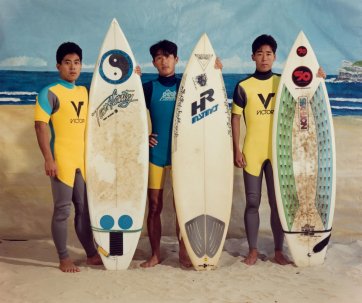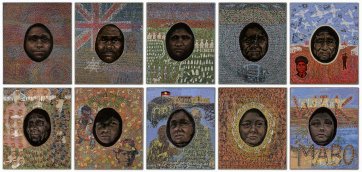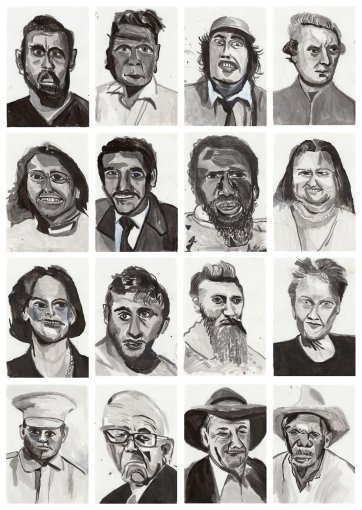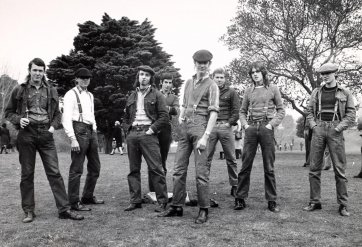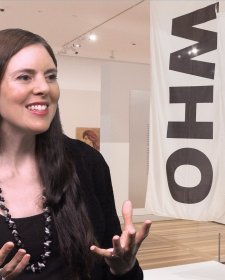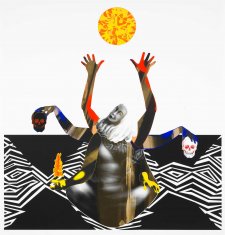It’s often thought that foremost among portraiture’s many functions is the documentation of individuals who are celebrated and familiar, or who best exemplify the temper and identity of a certain place at a certain time. In 1900, for instance, when artist Tom Roberts exhibited his series of twenty-three portraits of actors, writers, musicians and various other notables, he envisaged the group as a prototype national portrait gallery – a collection of iconic Australian characters that would be kept together for posterity.
1 The surfers, 1989 Anne Zahalka. National Gallery of Victoria. Purchased, 1991. 2 Rachel Roxburgh, 1939 Adelaide Perry. © Estate of Adelaide Perry, Currently on display.
Although portraiture may never completely shed this association with biography, history, publicity and fame, portraits now present a hybrid character: one that lends itself to multiple interpretive angles, facilitates a form of connection with others, and can enable a more resonant elucidation of identity and culture.
1 Federation series: 1901-2001, 2001 Dr Julie Dowling. National Gallery of Victoria. Purchased through the NGV Foundation with the assistance of Rupert Myer, Governor, 2001. 2 I'm black (Nicky Winmar), covered vase, 2015 Rona Panangka Rubuntja. National Gallery of Victoria
Purchased, Victorian Foundation for Living Australian Artists, 2015.
It is true too that artists will continue to reconfigure the forms and languages of a purportedly staid genre to make incisive observations about nationhood, identity and the nature of ‘likeness’. Artists such as Vincent Namatjira, Tracey Moffatt, Julie Dowling and Anne Zahalka utilise existing iconographies to highlight who has been excluded from national narratives and why, creating portraits that are icons in spite of themselves while questioning who is remembered, and who is not.
1 Australia in Black and White, 2018 Vincent Namatjira OAM. National Gallery of Victoria. Purchased, Victorian Foundation for Living Australian Artists, 2019. 2 Sharpies, Melbourne, 1973; printed (c. 1977-1978) Rennie Ellis. National Gallery of Victoria. Purchased NGV Foundation, 2006.

